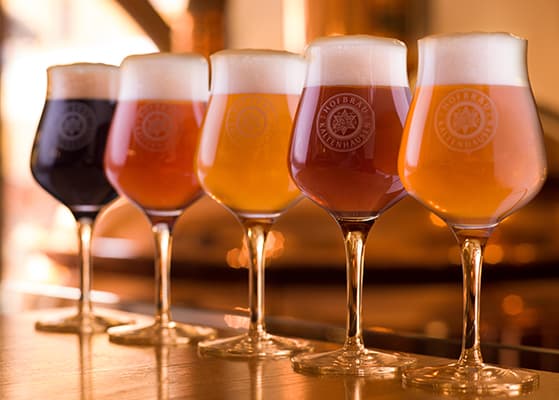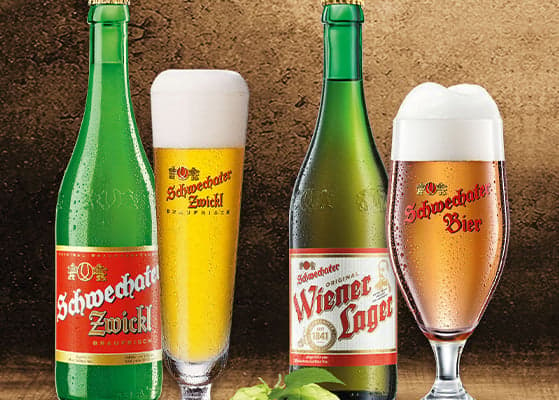Bier von hier!

Bier statt Wein? Wir schenken ein! Knapp 100 Liter trinken Frau und Herr Österreicher im Durchschnitt pro Kopf und Jahr vom goldenen Gerstensaft. Ob ein klassisches Lager oder Märzen oder doch ein trendiges Pale Ale ins Glas kommt? Echte Bierfans setzen klare Prioritäten. Klar ist für uns, dass wir das Feiertagsbierchen ums Eck bevorzugen. Deshalb haben wir uns bei alten Hasen und Newcomern gleichermaßen durchs Sortiment gekostet und für euch eine feine Auswahl österreichischer Biere zusammengestellt.
Die brauen uns was zusammen: Neben den klassischen Urgesteinen Kaltenhauser aus Salzburg und Schwechater findet ihr bei uns kreative Sorten aus der Vienna Brewery MUTTERMILCH und Biere mit Charakter von Bevog aus Bad Radkersburg. Die punkten übrigens auch mit ihren ausgefallenen Designs.
Na dann, Prost!
Aus Salzburg: Kaltenhausen Bier

Die Geschichte der ältesten Brauerei Salzburgs beginnt mit der Grundsteinlegung durch den Salzburger Kaufmann Hans Elsenheimer. In Kaltenhausen wo klarstes Felsquellwasser von den Barmsteinen die Herstellung und unterirdische Kalträume die Lagerung von Bier in besonderer Weise begünstigten, errichtete er im Jahr 1475 das sogenannte “Kalte Bräuhaus”. Eine Mischung aus Tradition und Moderne, gepaart mit allerhöchstem Qualitätsanspruch, macht die Spezialitäten-Manufaktur des Hofbräus Kaltenhausen so besonders.
Das Kaltenhausen Pale Ale ist leuchtend bernsteinfarben und vollmundig. Am Gaumen intensiv hopfig, mit dem Aroma tropischer Früchte und harmonischer Bittere.
Das Kaltenhausen Kellerbier ist hellgold, ungefiltert, naturtrüb und besonders süffig und mild zu trinken. In der Nase fein hopfig und am Gaumen leicht trinkbar, mit Aromen von schonend gedarrtem Getreide.
Aus Niederösterreich: Schwechater Bier

Die Erfindung des Lagerbieres durch Anton Dreher machte die Brauerei Schwechat, gegründet 1632, weltberühmt. Und auch heute genießt man mit den Schwechater Bierspezialitäten ein kostbares Stück Wiener und österreichischer Tradition.
Das Schwechater Zwickl ist strohgelb, unfiltriert mit dichter Hefetrübung. Es ist betont feinaromatisch gehopft mit blumiger Note. Am Gaumen cremig und weich. Die Kohlensäure ist in dieser kellerfrischen Spezialität besonders ausgewogen eingebunden. Im Nachtrunk hopfenaromatisch ausklingend.
Das Wiener Lager ist bernsteinfarben mit orangen Reflexen, in der Nase findet man feine hopfige Noten unterstrichen durch leicht biskuitartige Töne. Im Trunk wird die dezente Bittere durch röstige, malzige Aromen unterstützt.
